Anti-Money Laundering (AML) regulations are crucial for protecting the financial system from financial crimes. A key part of AML compliance is the customer risk assessment (CRA) methodology. This process helps financial institutions identify and manage the risks associated with their clients. Having a strong CRA strategy is not only necessary for meeting regulations but also for safeguarding your business from legal and financial risks.

Here’s a simple guide to understanding and developing an effective customer risk assessment methodology for AML compliance.
1. Understanding Customer Risk Assessment
Customer risk assessment (CRA) involves collecting comprehensive information about your clients, such as their employment, sources of income, and transaction behavior. This assessment helps decide how much due diligence and monitoring each customer needs, ensuring your institution remains compliant with AML regulations.
2. Key Elements of a Good CRA Methodology
A good customer risk assessment methodology typically includes the following steps:
Collecting Customer Information: Start by gathering basic details about the customer, including their name, address, and contact information. Also, collect more detailed information such as their job, source of funds, and transaction patterns.
These factors include the customer’s location (especially if they come from a high-risk country), the type of business they operate (such as cash-heavy industries), their transaction habits, and their connections to politically exposed persons (PEPs).
Scoring and Categorizing Risk: After identifying the risk factors, assign a risk score to the customer. This score will place them into a low, medium, or high-risk category. This helps determine the level of monitoring and due diligence needed for each customer.
Ongoing Monitoring and Review: Customer risk assessment doesn’t end with the initial evaluation. Continuously monitor transactions and review customer risk profiles regularly. Changes in customer behavior or new regulations may require updating their risk level.
3. Best Practices for Implementing CRA Methodology
To make your customer risk assessment effective, follow these best practices:
Use Technology: Advanced software can automate parts of the CRA process, such as data collection, risk scoring, and monitoring. These tools can update risk profiles in real time, making the process more efficient and easing the workload on your compliance team.
Apply a Risk-Based Approach: Different customers present different levels of risk. By focusing more on high-risk customers and simplifying due diligence for low-risk clients, you can make your compliance efforts more efficient.
Stay Compliant with Regulations: Ensure your CRA methodology aligns with current AML regulations and guidelines. This means following recommendations from bodies like the Financial Action Task Force (FATF) and local regulatory agencies. Regular staff training on AML law updates is also essential.
Regularly Audit and Review: Regular audits of your CRA process help find and fix any gaps or inefficiencies. These reviews should cover all parts of the CRA process, including data collection, risk scoring, and monitoring. Assess the effectiveness of your technology and tools as well.
Promote a Compliance Culture: A successful CRA methodology relies on both good processes and the people using them. Build a strong compliance culture in your organization to ensure everyone understands the importance of CRA and their role in AML compliance. Regular training and clear communication are key.
4. Challenges in Customer Risk Assessment
Despite best practices, customer risk assessment can still be challenging:
Ensuring Data Quality: Inaccurate or incomplete customer data can lead to poor risk assessment. Strong verification processes are necessary to keep data accurate.
Adapting to Evolving Risks: Financial crimes are becoming more sophisticated, and so are the risks. Keeping up with these changes requires regularly updating your risk factors and methodologies.
Conclusion
A strong customer risk assessment methodology is essential for a successful AML compliance program. By accurately evaluating and categorizing customer risk, financial institutions can use their resources more efficiently, reduce potential threats, and meet regulatory requirements.
Adopting best practices and using advanced technology can greatly improve your risk assessment’s effectiveness. This not only helps maintain compliance but also enhances your organization’s defenses against financial crime. Furthermore, a proactive approach to risk assessment promotes a culture of vigilance and integrity within your institution, ensuring long-term resilience and trust in the financial system.


